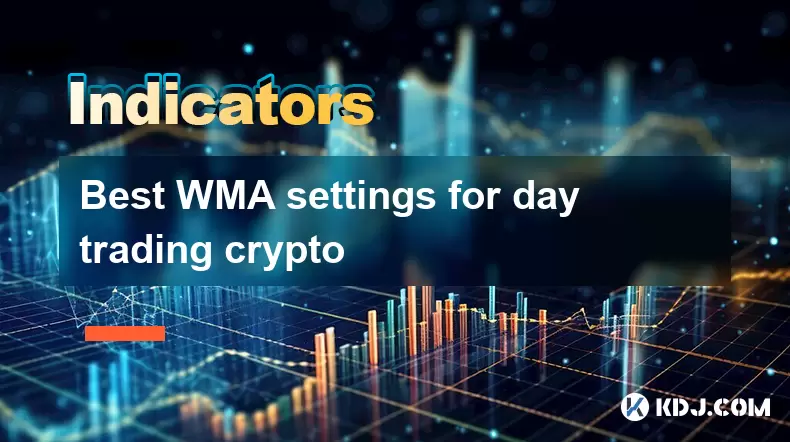-
 Bitcoin
Bitcoin $118,698.3676
0.16% -
 Ethereum
Ethereum $3,428.4877
5.97% -
 XRP
XRP $3.2496
9.52% -
 Tether USDt
Tether USDt $1.0002
0.00% -
 BNB
BNB $725.6930
4.36% -
 Solana
Solana $174.8923
4.52% -
 USDC
USDC $0.9997
-0.02% -
 Dogecoin
Dogecoin $0.2139
6.02% -
 TRON
TRON $0.3155
4.62% -
 Cardano
Cardano $0.8045
7.12% -
 Hyperliquid
Hyperliquid $46.6582
-1.72% -
 Stellar
Stellar $0.4676
0.80% -
 Sui
Sui $4.0143
0.38% -
 Chainlink
Chainlink $17.1546
2.97% -
 Hedera
Hedera $0.2458
3.27% -
 Bitcoin Cash
Bitcoin Cash $496.5967
-0.06% -
 Avalanche
Avalanche $22.8813
3.13% -
 Shiba Inu
Shiba Inu $0.0...01439
3.42% -
 UNUS SED LEO
UNUS SED LEO $8.8389
0.42% -
 Toncoin
Toncoin $3.2113
2.82% -
 Litecoin
Litecoin $101.2646
4.24% -
 Polkadot
Polkadot $4.2262
2.32% -
 Monero
Monero $340.4295
2.92% -
 Pepe
Pepe $0.0...01365
2.92% -
 Uniswap
Uniswap $8.9702
-2.78% -
 Bitget Token
Bitget Token $4.7675
2.00% -
 Dai
Dai $0.9998
-0.02% -
 Ethena USDe
Ethena USDe $1.0003
-0.04% -
 Aave
Aave $324.6394
-2.11% -
 Bittensor
Bittensor $433.6051
-0.88%
Best WMA settings for day trading crypto
The Weighted Moving Average (WMA) helps day traders identify crypto trends by emphasizing recent prices, offering quicker signals than the SMA for dynamic market conditions.
Jul 17, 2025 at 04:08 am

Understanding WMA in the Context of Day Trading Crypto
The Weighted Moving Average (WMA) is a technical indicator commonly used by traders to identify trends and potential reversal points in financial markets, including cryptocurrency. Unlike the Simple Moving Average (SMA), which gives equal weight to all data points within a specified period, the WMA assigns more weight to recent price data, making it more responsive to new information.
In the world of day trading crypto, where market conditions can shift rapidly due to news events, regulatory changes, or macroeconomic factors, having an indicator that reacts quickly to price changes can be crucial. The WMA helps filter out noise from random price fluctuations and provides clearer signals for entry and exit points.
When using WMA for day trading cryptocurrencies like Bitcoin, Ethereum, or altcoins, it's important to understand how different settings affect its sensitivity and accuracy.
Choosing the Right Period Length for WMA
One of the most critical decisions when configuring WMA is selecting the period length. This determines how many previous price bars are included in the calculation and how much emphasis is placed on the most recent data.
- For aggressive intraday strategies on 1-minute or 5-minute charts, shorter periods such as 5 or 10 may be preferred.
- On 15-minute or 30-minute timeframes, a WMA of 20 or 30 might offer better balance between responsiveness and reliability.
- In volatile crypto markets, many traders combine multiple WMA lines with different periods to spot crossovers and confirm trend direction.
It's essential to backtest various period lengths against historical data to determine which settings align best with your trading style and risk tolerance. Shorter periods increase sensitivity but also raise the likelihood of false signals, while longer periods smooth out volatility but may lag behind actual price action.
Combining WMA with Other Indicators
Using WMA in isolation can lead to missed opportunities or misleading signals. To enhance its effectiveness in day trading crypto, consider combining it with other tools:
- Volume indicators help confirm whether a WMA crossover or divergence is supported by strong buying or selling pressure.
- Relative Strength Index (RSI) can be used alongside WMA to identify overbought or oversold conditions, especially during sharp price swings.
- Bollinger Bands or ATR (Average True Range) can complement WMA by providing insights into volatility and potential breakout zones.
A common strategy involves plotting a fast WMA (e.g., 10-period) and a slow WMA (e.g., 30-period) on the chart. When the fast WMA crosses above the slow one, it may signal a bullish trend; conversely, a cross below could indicate a bearish move.
Optimizing WMA Settings Based on Market Conditions
Cryptocurrency markets operate 24/7 and are known for their high volatility and frequent whipsaws. As such, static WMA settings may not always perform well across different market phases.
- During trending markets, increasing the WMA period slightly can reduce premature exits and allow you to ride the trend longer.
- In ranging or sideways markets, shorter WMA settings can help capture quick moves without getting stuck in indecisive price action.
- It's also beneficial to adjust WMA based on the asset being traded—Bitcoin may require different parameters than a small-cap altcoin due to differences in liquidity and volatility.
Traders should experiment with adaptive WMA configurations or even use dynamic multi-timeframe analysis to fine-tune entries and exits. Some platforms allow scripting or algorithmic adjustments to WMA based on volatility metrics or volume surges.
Practical Steps to Apply WMA in Your Crypto Day Trading Strategy
To effectively integrate WMA into your day trading approach, follow these steps:
- Step 1: Choose your trading platform – Ensure it supports customizable WMA indicators and allows real-time charting with crypto pairs.
- Step 2: Select your base timeframe – Decide whether you're focusing on scalping (1–5 min), swing intraday (15–60 min), or mixed approaches.
- Step 3: Set up dual WMAs – Add two WMA lines with different periods (e.g., 10 and 30) to generate crossover signals.
- Step 4: Overlay with volume and RSI – Use these to validate WMA-based trade ideas and avoid false breakouts.
- Step 5: Backtest and paper trade – Test your WMA settings on past data and simulate trades before committing real funds.
By following these steps and continuously refining your WMA configuration, you can build a robust framework for identifying high-probability setups in fast-moving crypto markets.
Frequently Asked Questions
Q: Can I use WMA for both long and short positions in crypto trading?
Yes, WMA can be used to identify both bullish and bearish signals. A rising WMA often indicates support for long positions, while a falling WMA may act as resistance for shorting opportunities.
Q: Is WMA better than EMA for day trading crypto?
While both WMA and Exponential Moving Average (EMA) emphasize recent prices, WMA applies strictly decreasing weights. Some traders find WMA offers cleaner signals in highly volatile environments.
Q: How do I know if my WMA settings are too sensitive or not reactive enough?
If your WMA generates too many false signals, it may be too sensitive. Conversely, if it lags significantly behind price action, consider reducing the period length.
Q: Can I automate WMA-based trading strategies in crypto?
Yes, many trading platforms and bots support custom scripts or integration with APIs that allow automated execution based on WMA crossovers and other criteria.
Disclaimer:info@kdj.com
The information provided is not trading advice. kdj.com does not assume any responsibility for any investments made based on the information provided in this article. Cryptocurrencies are highly volatile and it is highly recommended that you invest with caution after thorough research!
If you believe that the content used on this website infringes your copyright, please contact us immediately (info@kdj.com) and we will delete it promptly.
- XRP's Wild Ride: Chasing ATHs and Cloud Mining Dreams in the Crypto Jungle
- 2025-07-18 02:30:13
- MoonBull, Crypto Gains, and MEW Volume: What's Buzzing in the Meme Coin World?
- 2025-07-18 02:35:12
- Crypto Market, Bull Market, and Policy: Navigating Trump's 'Crypto Week' Rollercoaster
- 2025-07-18 01:50:12
- Winning Design: Nine-Year-Old's Art Becomes a Chocolate Coin!
- 2025-07-18 01:10:12
- Penguin Power, BlockDAG Boldness, and Uniswap's Upswing: Decoding Crypto's Latest Moves
- 2025-07-18 01:50:12
- Bitcoin, Market Cap & Strategy: Decoding the Crypto Game in 2025
- 2025-07-18 01:10:12
Related knowledge

Advanced RSI strategies for crypto
Jul 13,2025 at 11:01am
Understanding the Basics of RSI in Cryptocurrency TradingThe Relative Strength Index (RSI) is a momentum oscillator used to measure the speed and chan...

Crypto RSI for day trading
Jul 12,2025 at 11:14am
Understanding RSI in the Context of Cryptocurrency TradingThe Relative Strength Index (RSI) is a momentum oscillator used to measure the speed and cha...

Crypto RSI for scalping
Jul 12,2025 at 11:00pm
Understanding RSI in the Context of Crypto TradingThe Relative Strength Index (RSI) is a momentum oscillator widely used by traders to measure the spe...

What does an RSI of 30 mean in crypto
Jul 15,2025 at 07:07pm
Understanding RSI in Cryptocurrency TradingRelative Strength Index (RSI) is a momentum oscillator widely used in cryptocurrency trading to measure the...

What does an RSI of 70 mean in crypto
Jul 13,2025 at 06:07pm
Understanding the RSI Indicator in Cryptocurrency TradingThe Relative Strength Index (RSI) is a widely used technical analysis tool that helps traders...

Does RSI work in a bear market for crypto
Jul 16,2025 at 01:36pm
Understanding RSI in Cryptocurrency TradingThe Relative Strength Index (RSI) is a momentum oscillator used by traders to measure the speed and change ...

Advanced RSI strategies for crypto
Jul 13,2025 at 11:01am
Understanding the Basics of RSI in Cryptocurrency TradingThe Relative Strength Index (RSI) is a momentum oscillator used to measure the speed and chan...

Crypto RSI for day trading
Jul 12,2025 at 11:14am
Understanding RSI in the Context of Cryptocurrency TradingThe Relative Strength Index (RSI) is a momentum oscillator used to measure the speed and cha...

Crypto RSI for scalping
Jul 12,2025 at 11:00pm
Understanding RSI in the Context of Crypto TradingThe Relative Strength Index (RSI) is a momentum oscillator widely used by traders to measure the spe...

What does an RSI of 30 mean in crypto
Jul 15,2025 at 07:07pm
Understanding RSI in Cryptocurrency TradingRelative Strength Index (RSI) is a momentum oscillator widely used in cryptocurrency trading to measure the...

What does an RSI of 70 mean in crypto
Jul 13,2025 at 06:07pm
Understanding the RSI Indicator in Cryptocurrency TradingThe Relative Strength Index (RSI) is a widely used technical analysis tool that helps traders...

Does RSI work in a bear market for crypto
Jul 16,2025 at 01:36pm
Understanding RSI in Cryptocurrency TradingThe Relative Strength Index (RSI) is a momentum oscillator used by traders to measure the speed and change ...
See all articles

























































































